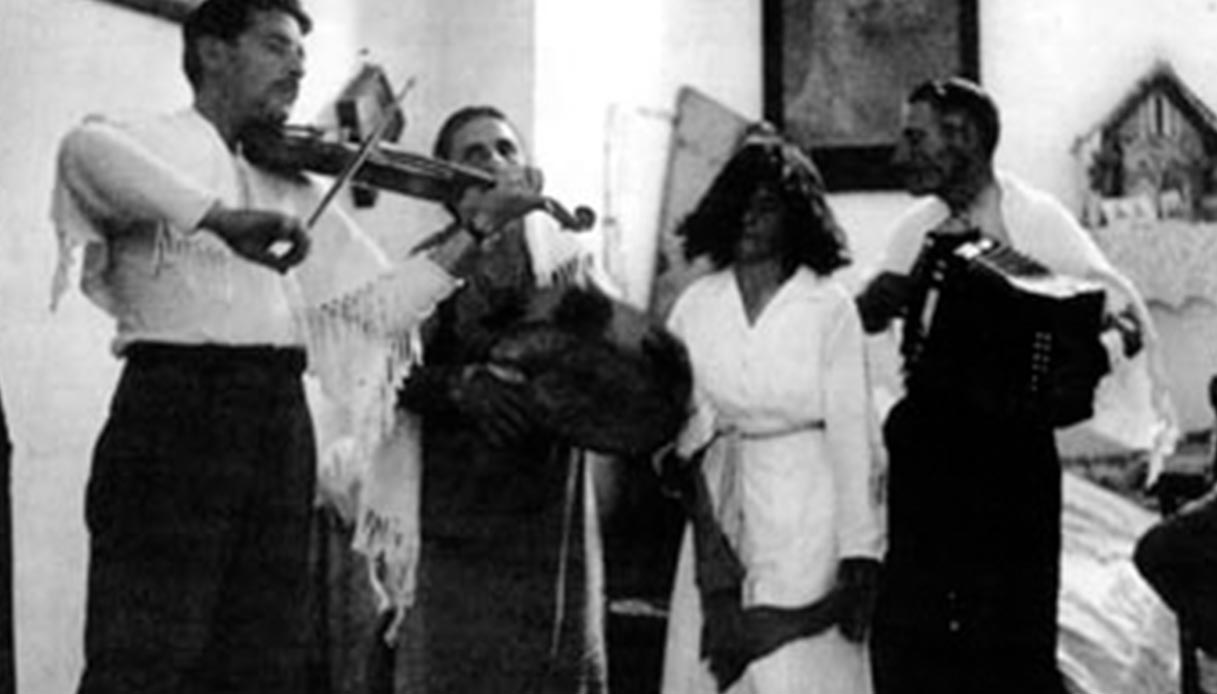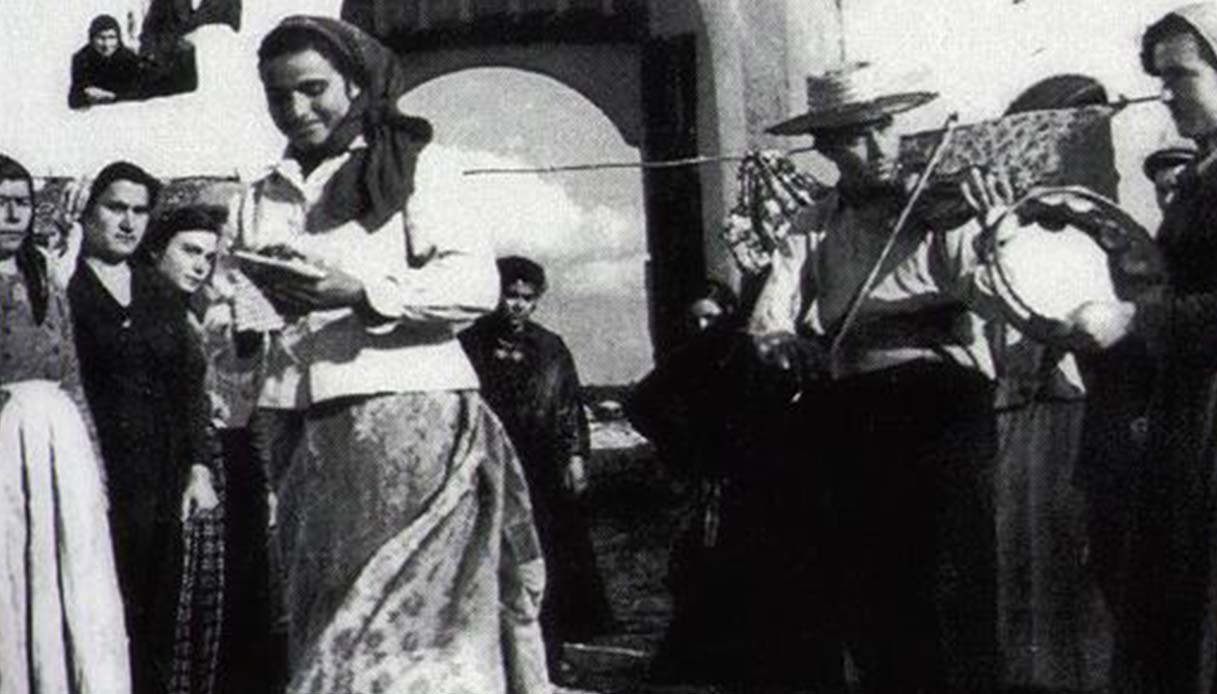Table of Contents
When the temperatures soar and the calendar confirms that the most awaited season of the year has begun, in the south of our boot they begin the preparations for one of the most important events of our country: the Night of the Taranta. It is one of the most famous and anticipated events of the boot, the one that stages the famous and mysterious Salento dance.
Everyone knows taranta. Some of us have even delighted and enjoyed moving our steps to the rhythm of that popular music that sinks its deeper roots in Salento folklore. And if today the summer date and traditional dance, which represent one of the most fascinating phenomena of popular culture, are known all over the world, there are few people who know. the true story of the taranta.
The one that contains a little bit of magic and a little bit of mystery, which preserves very ancient stories, the same one that tells of the discomfort of the female condition from a long time ago, but not too much.

Luigi Stifani, Salvatora Marzo, Pasquale Zizzani, during the exorcism of a tarantata
Between magic and mystery: the Taranta
History teaches us that taranta has always had a very important cultural and social role. The dance, in fact, was at the center of the worldliness of the Salento nobility and, according to some stories, even Ferdinand IV of Bourbon, on the occasion of a visit to the city, delighted in this dance.
The popular origins of the taranta have meant that this dance has reached the present day becoming a real symbol of Salento folklore. However, the story linked to the origins of this dance is in stark contrast to the atmosphere that reigns during the events that stage it.
The history of the Taranta is linked to tarantism, one disease caused by a spider bite, the tarantula in fact. Once pinched by the animal, the bitten women showed very disturbing symptoms. A illness or a form of hysteria due to the cultural context?
Musical exorcism and pizzicata
The origins of taranta, in fact, are steeped in the land of the region and in the tiring and exhausting work of the peasants, in the popular suggestions and in female discomfort. Because it was them, the tarantate, to be those most affected by that pathology. They who, forced to spend the days hunched over on two knees, in the days of the harvest, were pinched by the spider, by the taranta.
And then there she was, in all its brutal force, that pathology was unleashed: severe abdominal pain, spasms, deep frustration and widespread malaise. Those women, by now, had been pinched, marked by that strange disease whose only cure was a dance.
The pizzicata, in fact, had to dance: only in this way would she have defeated the effects of the spider’s bite, with musical therapy. But the presence of that little orchestra playing, and that induced the tarantate to dance, also represented the indelible mark of the victim, the same destined to be marginalized by the community.
Yes, because being bitten by the taranta was a real misfortune that marked the lives of women and girls, forced by that unjust fate to dance, obsessively, for weeks, months and years.

Taranta in Lizzano, 1950
The tarantate, the spider and the triggering force
Of taranta, and its origins, everyone is interested in it: men of science, anthropologists and sociologists. They studied the gestures, they imitated them to interpret the signs. They tried to research its causes and yet it emerged that no spider present in Puglia, and in Italy, is able to cause those symptoms manifested in tarantate.
So, what exactly is tarantism? The causes of this “pathology” must be sought elsewhere and are clearly, and indissolubly, linked to the Apulian land. The region, which has always been a crossroads of peoples, traditions and rituals, is the guardian of ancient rites halfway between the sacred and the profane. And we cannot ignore this when we talk about the origins of the taranta.
Probably comes from here the choice to find in the spider the symbol of the triggering force of a deeper suffering that affects the marginalized of society, peasant women forced to work the land in inhuman conditions, the same ones that find in that tarantism, and in the consequent cure, the only opportunity to get out of that condition of frustration.
The same that frees them from the sufferings and constraints of a patriarchal and peasant society, of which women were victims. Because, needless to say, that spider pinched almost and exclusively women.
Female discomfort and the “redemption”
Even the Church tried to intervene on this syndrome which manifested itself above all in the summer months, which coincided with the wheat harvest in Puglia. In fact, as early as 1700, testimonies of a request have been collected thanks to San Paolo “Tied by a thousand roads to snakes and spiders”. This interpretation, however, is posthumous to the birth of the phenomenon and is a Christian addition that still survives today. Every 28 and 29 June, in fact, the Salento taranti repeat that dance in honor of St. Paul inside the church of Galantina.
But the profane symbols linked to this dance cannot be forgotten. There is the spider bite, the dance and the drum, there is the circle which is a symbol of the sacred space and there is the earth. But there is also the unease of the population, the one inexorably linked to the human psyche.
For scientists, this is a collective and hysterical phenomenon that reflects southern discomfort. The theses with a cultural background were then also endorsed by doctors. After all, just take a look at the belief, which concerns the whole area of Lecce, which provides that evil does not manifest itself thanks to the protection of St. Paul. So sacred and profane coexist, while the condition of women is the background to the whole phenomenon.
We must not forget that tarantism it manifested itself exclusively in the poor and disadvantaged classes of Salento. And it does not take long to understand how this was nothing more than the mirror of the social malaise of this community forced to work in exhausting conditions, to live in cramped houses, and to be marginalized by the rest of the population. With the pinched everything changed: people, especially women, could give vent to their discomfort.
The land of remorse
One of the major contributions on the history of the taranta was made by the anthropologist Ernesto De Martino, recognized as one of the greatest scholars of the phenomenon. His work, La terra del remorso (1959), dissects all the aspects studied up to that moment.
De Martino interviewed Tarantate women, spoke with psychiatrists, scientists and musicologists. It emerged that tarantism often emerged following a triggering event such as a bereavement, a family problem and a disappointment in love. Added to this was the strong sexual repression of the peasantry. A seemingly lethal mix though he had an escape route: the one that bore the name of taranta.

The taranta
Read also










